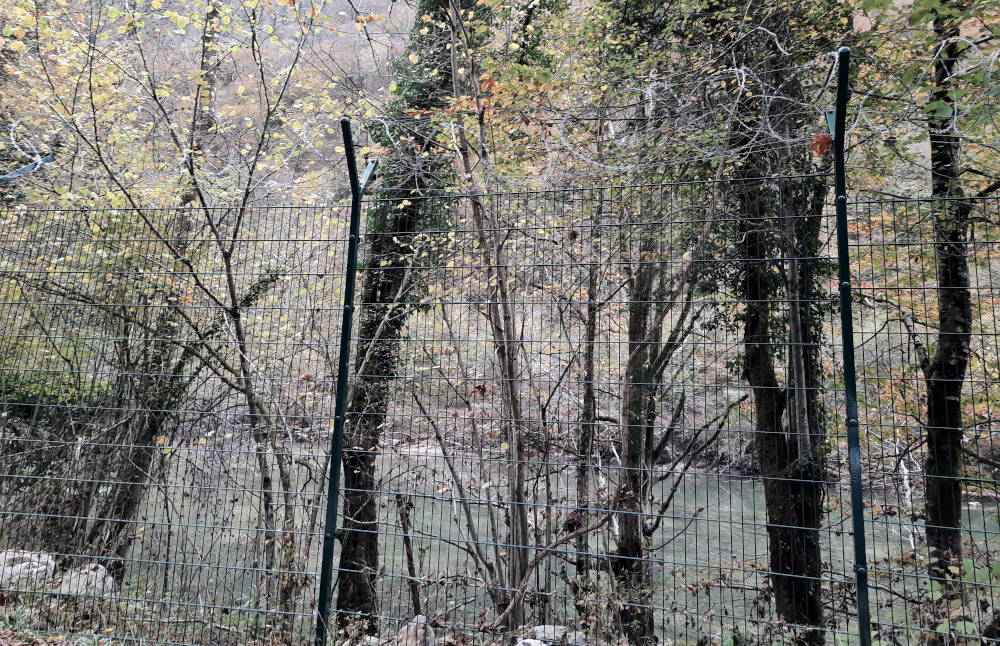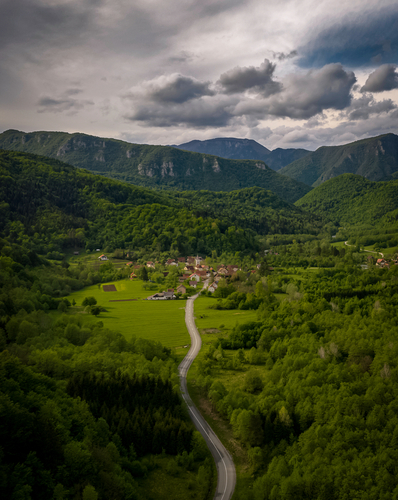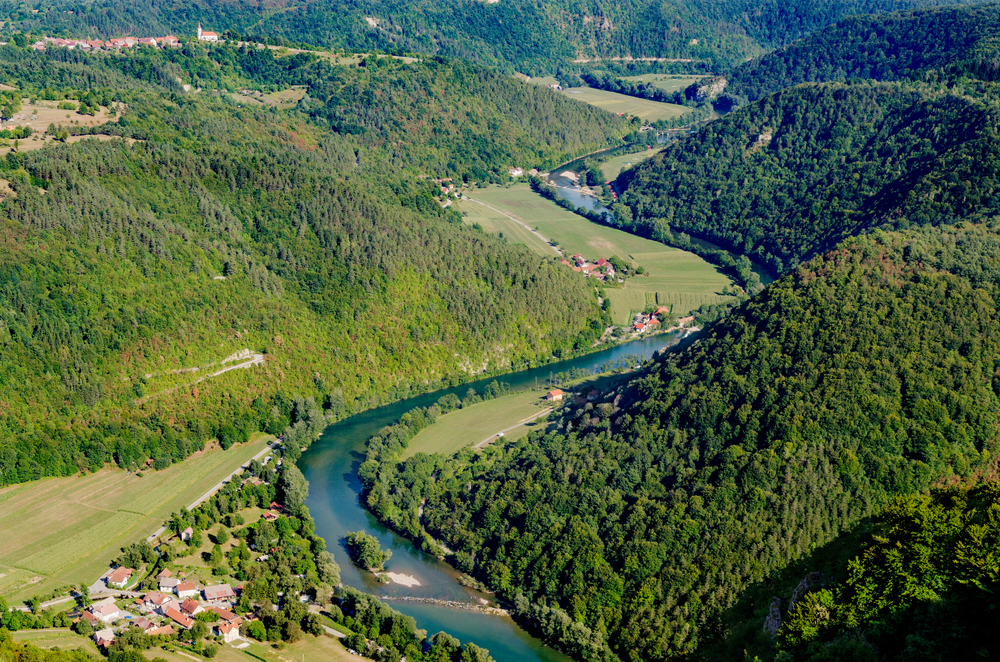
Barbed wire along the Slovenian bank of the Kupa – Giovanni Vale
Second episode of our reportage along the Kupa. The shock of the border in 1991, the shock of barbed wire in 2015. Yet, some are not giving up
(Read the first episode)
Brod na Kupi is a small village of 150 inhabitants on the southern side of the Kupa, close to the border with Slovenia. The bridge that crosses the river virtually overlooks the main square, where the castle built by the Francopans in the 15th century stands (later inherited by the Zrinskis, hence the current name of Kastel Zrinskih). In 1991, a border crossing popped up on this small bridge that leads to Petrina in Slovenia. Nothing impressive – a couple of bars and some prefabs for the agents, but enough to transform the old bridge over the Kupa into something serious and sinister.
"For the people here it was a shock when the border came up", recalls Natasa Letig Zagar, originally from Kostel, a town 4 km from Brod na Kupi, on the Slovenian side. "All families are mixed. The Kupa only divides when it is in full flow, otherwise life has been going on across banks for centuries", continues Letig Zagar, sitting in one of the cafes in Brod na Kupi. In this mountainous and sparsely inhabited region, the river flows fast and wild, often swelling in winter, while the fauna goes as far as the inhabited centres and one may even come across a wolf.
"I live with my family in a small village with only three houses, there are eight of us", says Natasa Letig Zagar, amused. She and her husband work in a chemical company about 40 minutes away by car, while a daughter is at university in Ljubljana and only comes back for the weekends. "She is very happy in the capital and the student house where she lives – if it did not close for the weekend, I doubt she would visit at all", continues the woman, who adds "maybe one day my children will ask us why we stayed here, but honestly who cares!", and bursts into laughter.
Aside from the lack of doctors and shops, living along this stretch of the Kupa is "magnificent", they say. In winter, the mist climbs the hills, creating a suspended and muffled atmosphere. In summer, the river welcomes kayak and bicycle enthusiasts, and those looking for a cooler climate than the coast. "Tourism is developing well, but slowly. The high season lasts just two months and those who rent canoes only do it as a secondary activity", continues Letig Zagar, who chairs an association for the promotion of culture and the territory.
Barbed wire along the river
If the first shock in this stretch of the Kupa occurred in 1991, when "the border" between Croatia and Slovenia was created, the second came in 2015, when the conservative government of Miro Cerar decided to install a barrier along the Slovenian southern border. "The right began to scare people, talking about Islamists, and the government ended up responding to those fears by building the wall. Pure fascism as far as I'm concerned", recalls Natasa Letig Zagar, according to whom the whole operation caused "damage to tourism, the environment, and animals" on over 50 kilometres of border.
Initially, the Slovenian government placed two rolls of barbed wire directly on the ground. The result was that animals accustomed to crossing the river were trapped all the time. Then, a high fence was built with barbed wire on top. Doors, occasionally provided along the wall, were left open during the night for the animals. "An endless series of absurdities, such as the fact that in some sections of the Kupa nothing has been built, perhaps due to lack of funds", comments Letig Zagar, who in 2016 contributed to the collection of 5,000 signatures against the wall.
The fence wanted by Cerar, which Golob's government began to dismantle today, did not stop refugees heading to Europe, but unfortunately the river sometimes did. "I remember at least three migrants who died in our area. The river drags the bodies downstream and it is up to the municipality that finds them to bury them. I don't even know if they are identified in any way and if their families are warned. Kupa can be dangerous in winter", warns Letig Zagar, who blurts out "imagine if a person who has walked across the Balkans and swum across the Kupa is going to stop in front of a fence. All propaganda!".
Davorin Klobucar, known as Dado, is in some ways the Croatian equivalent of Natasa Letig Zagar. Also involved in a local association, he has fought against the wall and is waiting for Croatia to join Schengen to see the border disappear. Both participated in the nice documentary "Žica" by Tiha K. Gudac on Slovenian barbed wire. Unlike Letig Zagar, however, Klobucar speaks like a raging river. Originally from Brod na Kupi, he lived for a long time in Rijeka, where he began his career as a basketball player (he played in the top league at the time of Yugoslavia), and returned to live along the Kupa in the early 2000s.
A real forge of ideas, Davorin Klobucar is at the origin of many initiatives that animate the life of these places. At the beginning of August there is the swimming against the current competition. It has been done for 18 years in a river that once again becomes not a border but a resource and common space between the two banks. Then there is the half marathon, which was initially run between one country and another, while for some years now it has taken place only on Croatian territory ("we were too fussed about crossing the border", sums up Klobucar). But with Croatia in Schengen, it will be possible to go back to the original idea.
Then there are many ecological actions to keep the Kupa clean, as well as rowing and rafting courses, apple days, and scientific expeditions. "We have many projects in the pipeline", assures Davorin Klobucar, sitting in the association's office a stone's throw from the square and the bridge with the border crossing, "for example, we would like to renovate the old wooden and rope bridges which in the past were used to cross the Kupa on foot. Since there is a border it is forbidden to use them and they are falling apart", the retired basketball player complains.
"In the future, the wood industry – the last one left in Brod na Kupi – will no longer exist, just as other economic realities have already disappeared. We must develop sports, natural and cultural tourism. Further downstream, on the Slovenian side, it has already been done, here instead we had a small campsite until the seventies and then it was closed", continues Davorin Klobucar, who is hoping for European funds and the renewed interest of visitors for the rivers of the region and for nature to give new impetus to an otherwise dormant area, especially in the winter months.
The park in Bela Krajina
A few kilometres further east, the Kupa widens and slows down, flowing alongside a barbed wire fence often bent by the water or almost completely uprooted. The "wall" crosses playgrounds and parking lots of restaurants and campsites, and often completely closes access to the river to those who rent canoes or go fishing. We drive through Stari trg ob Kolpi and continue along the Kupa formally entering the Kolpa Landscape Park (Krajinski park Kolpa), a narrow and long park that accompanies the river from Stari trg to Adlesici and beyond.
Established in 1998 by the municipality of Crnomelj, the park became national in 2006 and today employs four people for of approximately 4,400 hectares to be protected. One is Boris Grabrijan, whom we meet in Šokcev dvor, a traditional 16th century house used as a museum in the village of Zunici. "Here was the first military border between the Habsburg Empire and the Ottoman Empire, then the border moved further south, when the captaincy passed from Crnomelj to Karlovac [built by the Habsburgs in 1581, ed.]", explains Boris Grabrijan, as he guides us through the rooms of the house and the old stable.
"Bela Krajina is one of the most mixed regions of Slovenia. This small village, Zunici, is of Croatian origin. There are Serbian, Montenegrin, Greek Catholic villages… And my surname, for example, is Armenian", continues Boris Grabrijan, descending in the interior atrium of the dark wooden house. Today, at Sokcev dvor there is a small ethnological exhibition, a shop where you can buy handicrafts from the area, an information point for tourists, and about fifteen electric bicycles to rent to set off to discover the surroundings.
Park employees also have two tractors to cut the grass and help those who cultivate a field within the protected area free of charge. They also clean rainwater wells and eliminate invasive species from the Prilozje river and ponds not far from Metlika ("people abandon their pet turtles there"). "It is a pity that nationwide cooperation was not found on the Croatian side to create such a park. Our protection extends up to the middle of the Kupa and of course that doesn't make much sense", sighs Grabrijan.
The difference between the two banks of the shore, in this stretch of the Kupa, is indeed more marked. On the Slovenian side, within 15 km, there are ten campsites and glamping, active from May to September according to the rules of the park (in winter, however, all the bungalows and containers must be removed). On the Croatian side, however, it is not uncommon to see abandoned houses. "Slovenia has done a lot to encourage the inhabitants to stay around here", comments Boris Grabrijan, "on the Croatian side, ten years ago there was nothing, while for three years now a small tourist offer linked to the river has been developing".
Here too, Croatia's entry into the Schengen area bodes well for the Kolpa Park authorities. Joint projects are already being carried out with Croatian actors, such as for example Curs Colapis (from the Latin name of the river), an Interreg project – also financed by the EU cohesion policy – which between 2009 and 2012 led to the construction of 40 points of access to the water, ten bathing areas, and a proposal for common legislation on the tourist use of the river. With the disappearance of the Schengen border, the possibilities for joint activities will grow exponentially.
"There is, for example, the heron colony that lives in the oak forest along the river. It is one of the park's biggest attractions, but you can best admire it from the Croatian shore", admits Boris Grabrijan, who is already imagining the joint trips from the other side of the border.
This content is published in the context of the "Work4Future" project co-financed by the European Union (EU). The EU is in no way responsible for the information or views expressed within the framework of the project. The responsibility for the contents lies solely with OBC Transeuropa. Go to the "Work4Future"
































 To Top
To Top